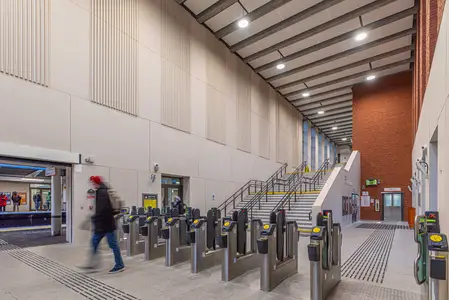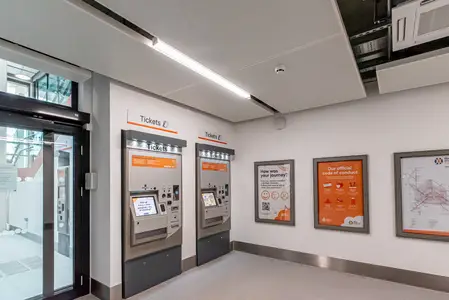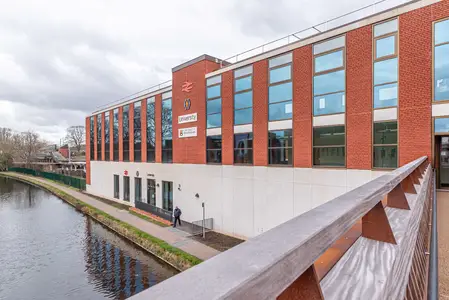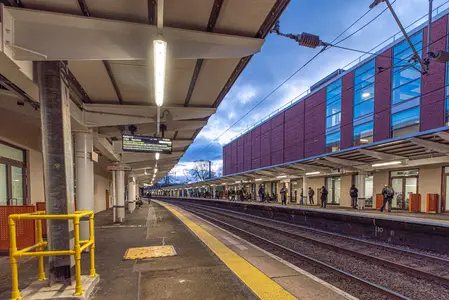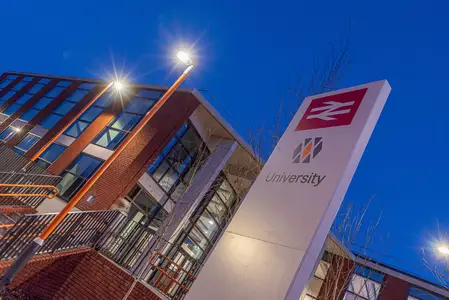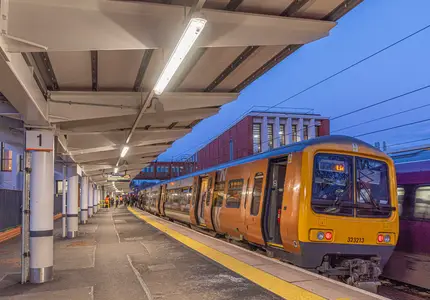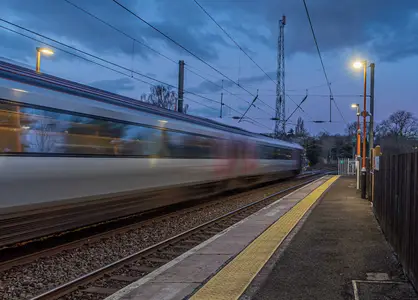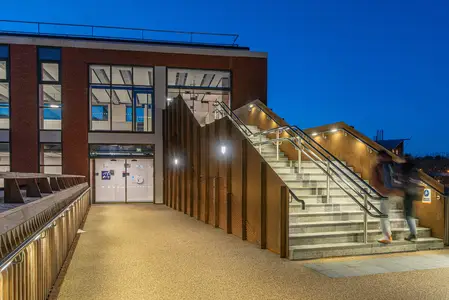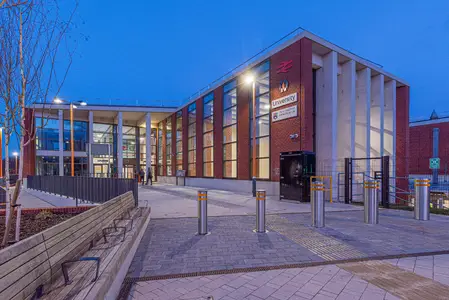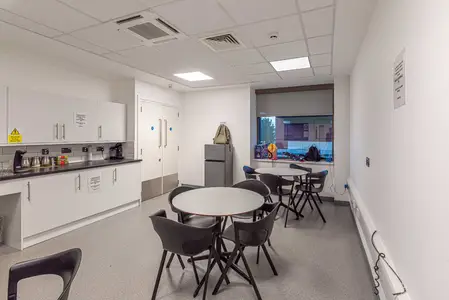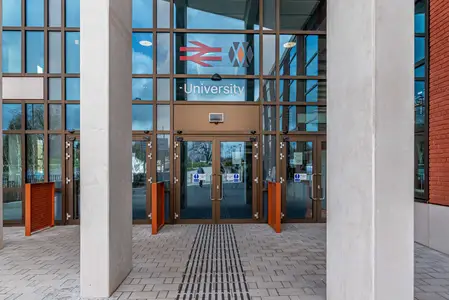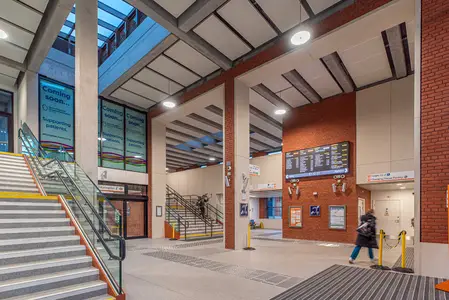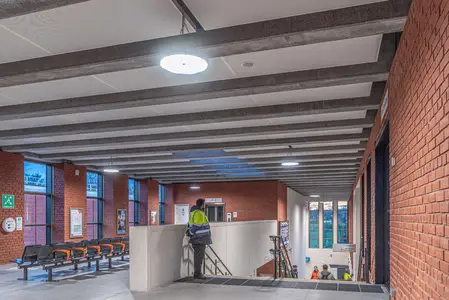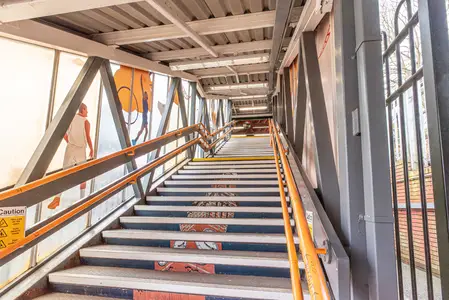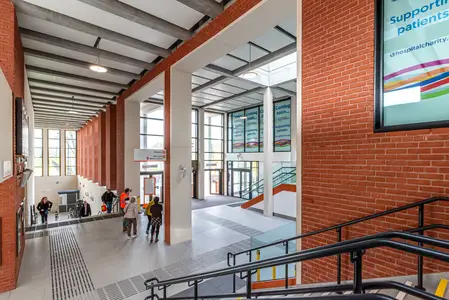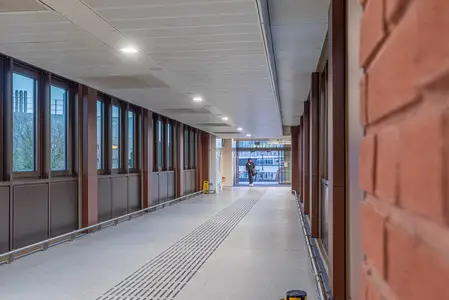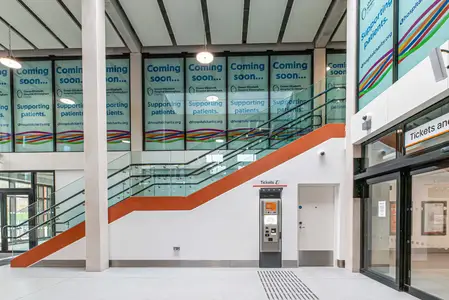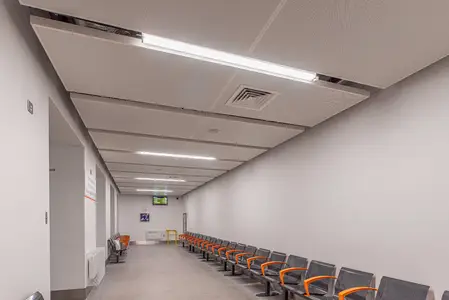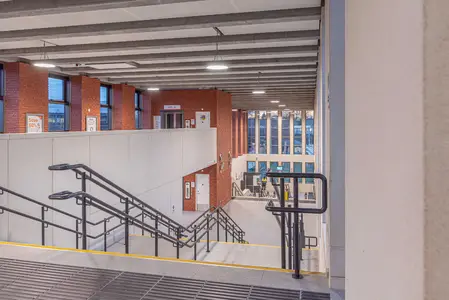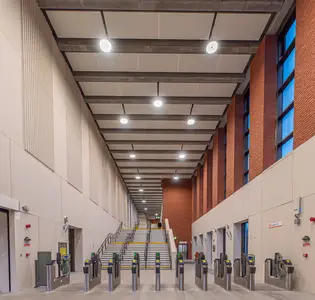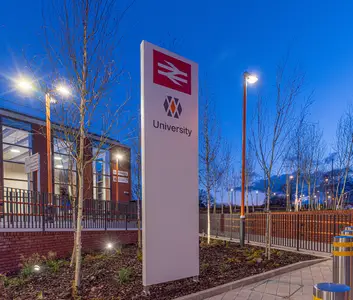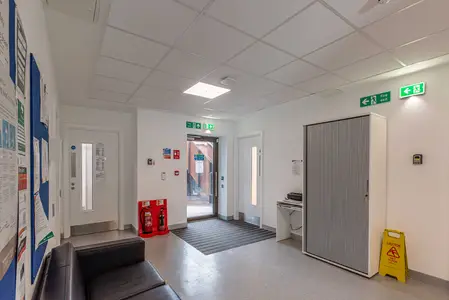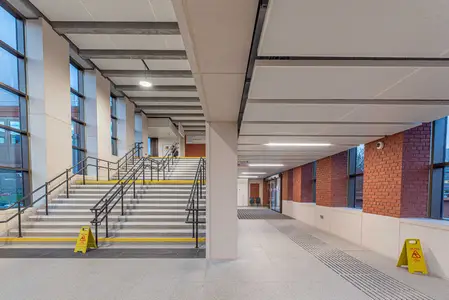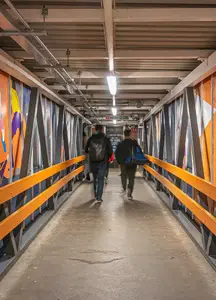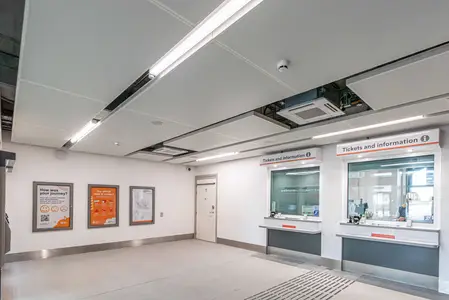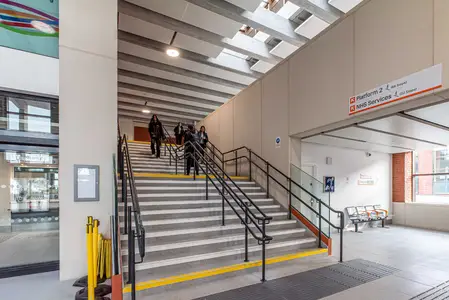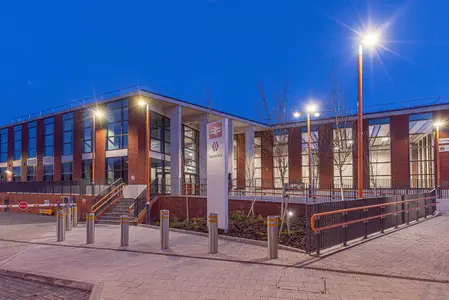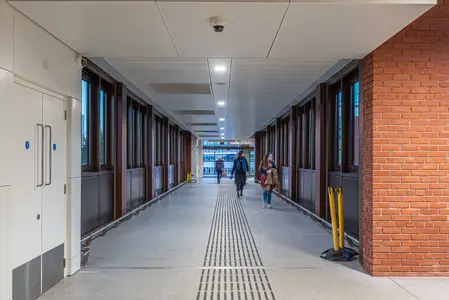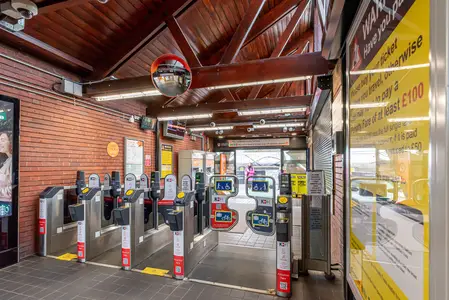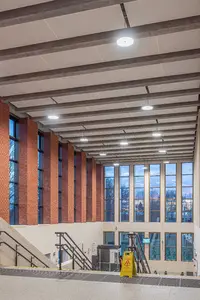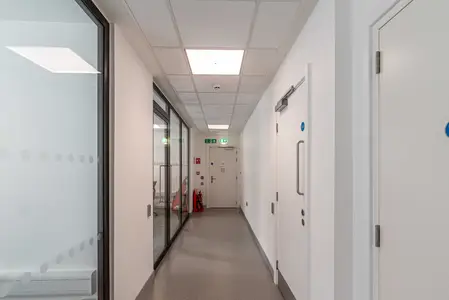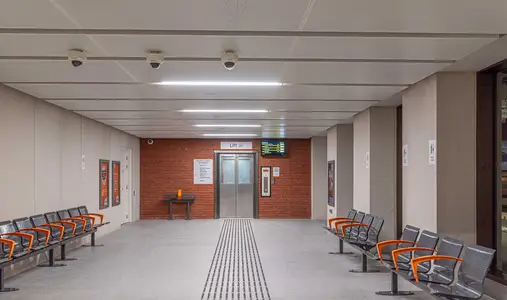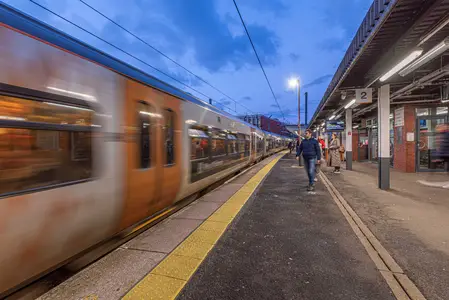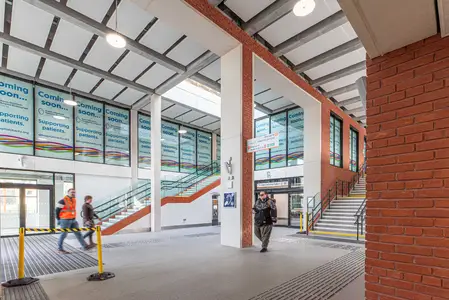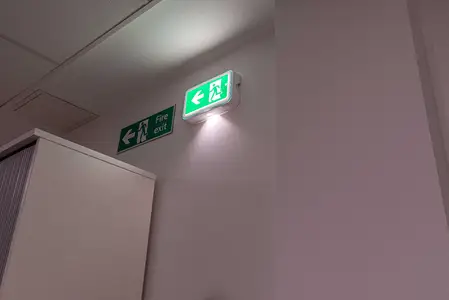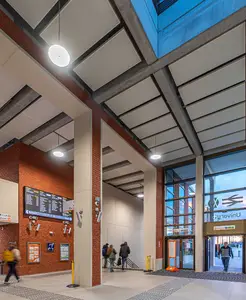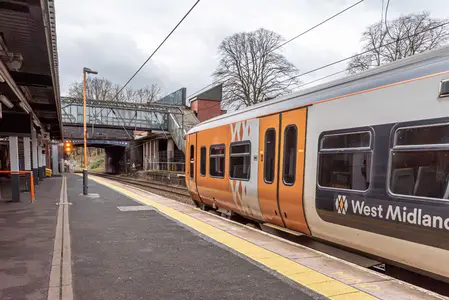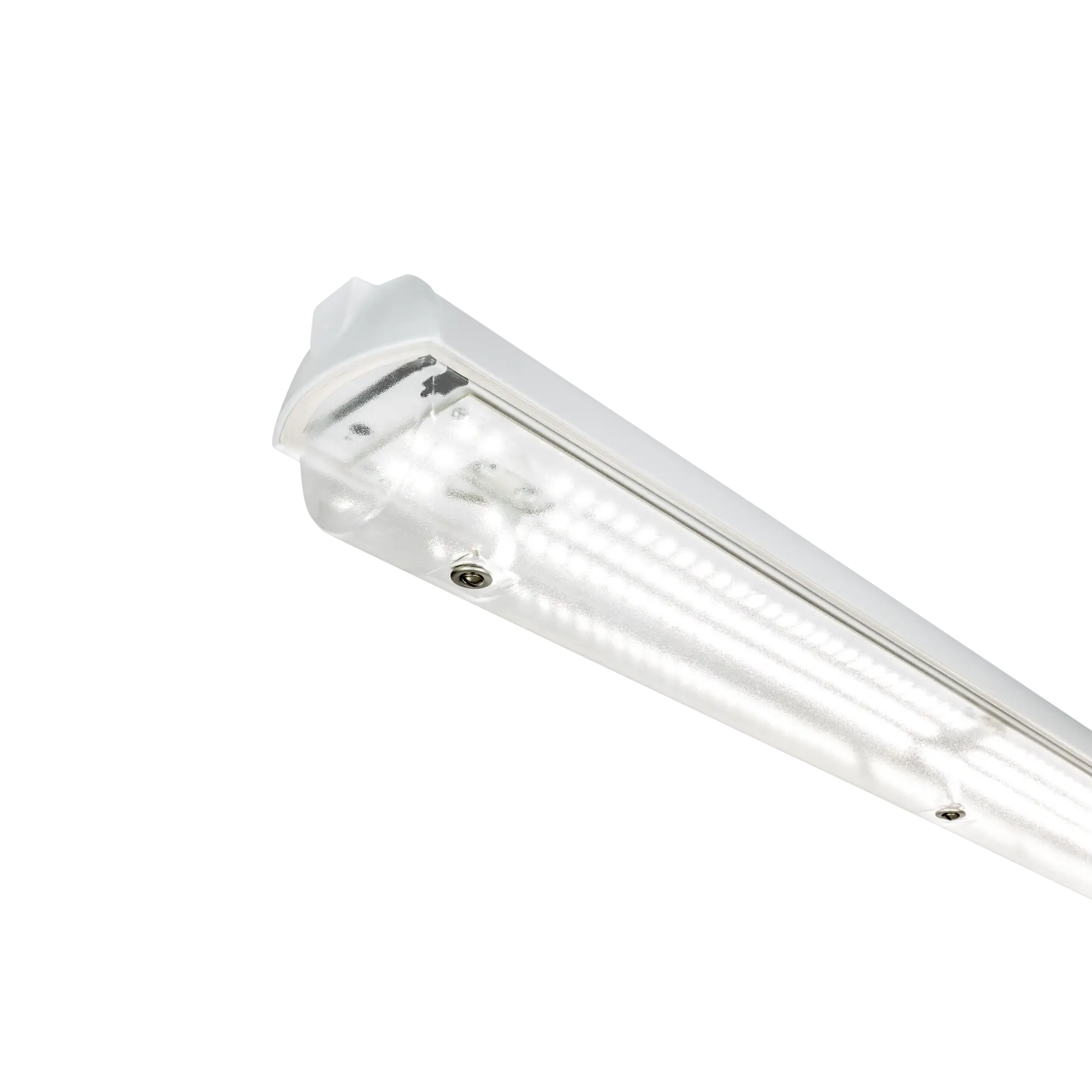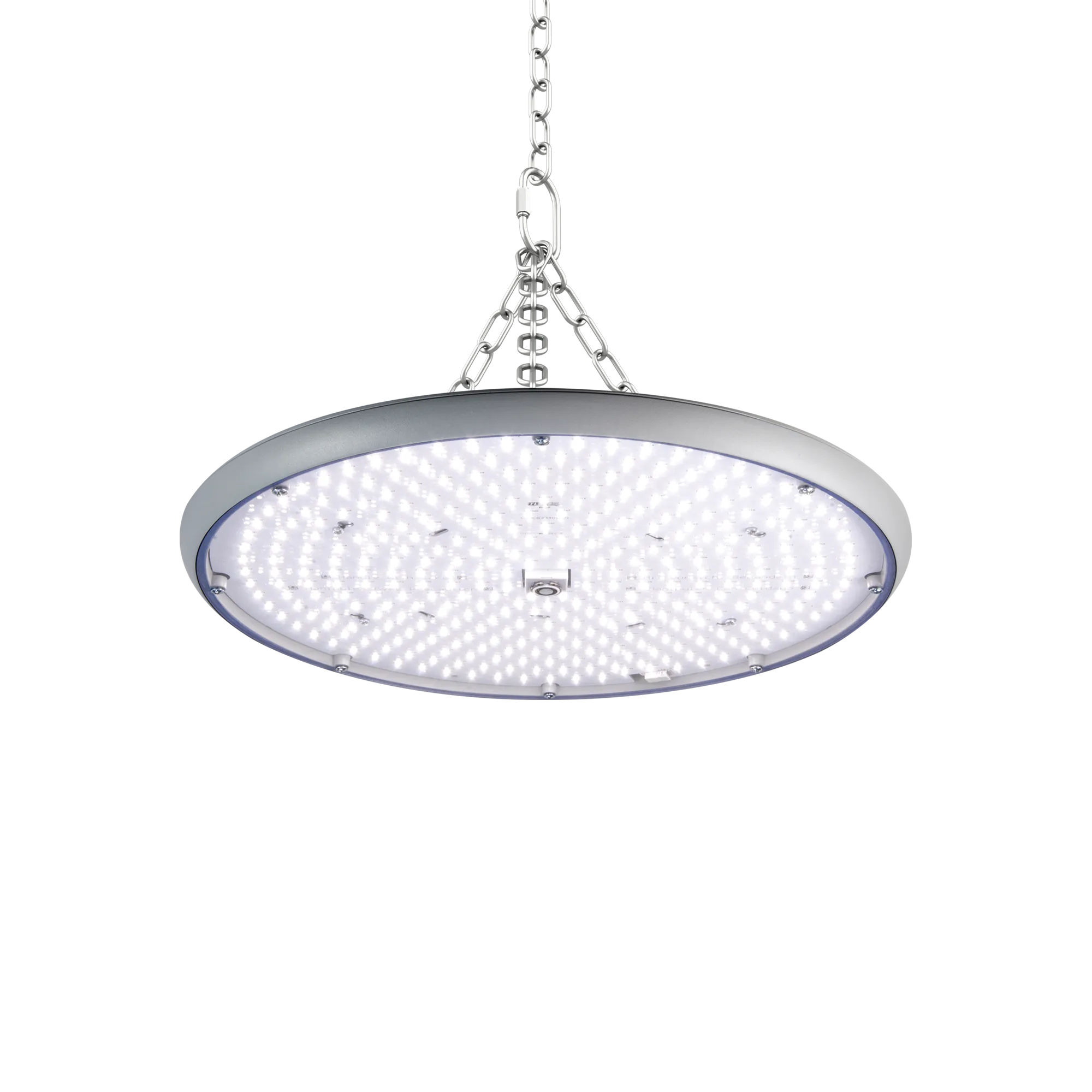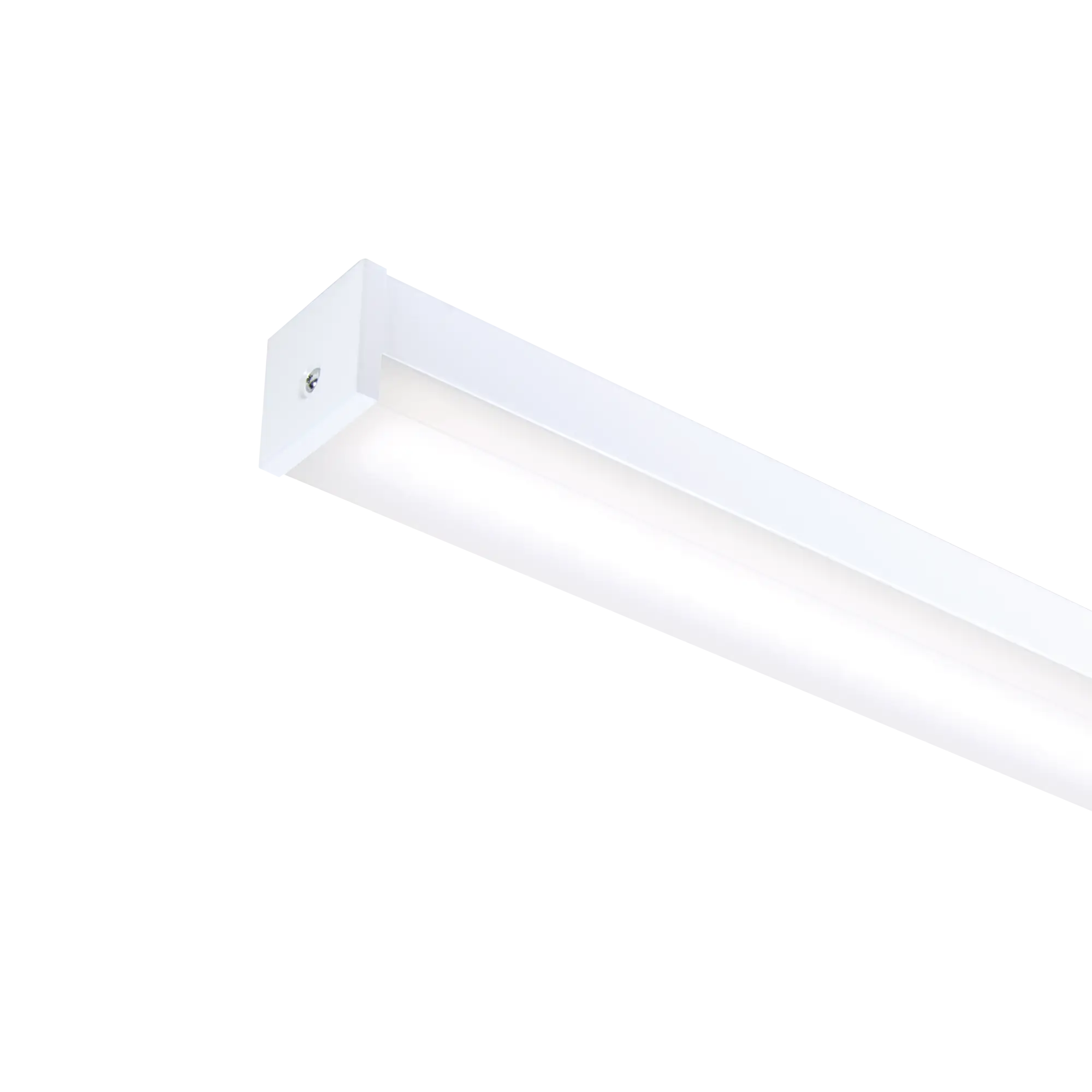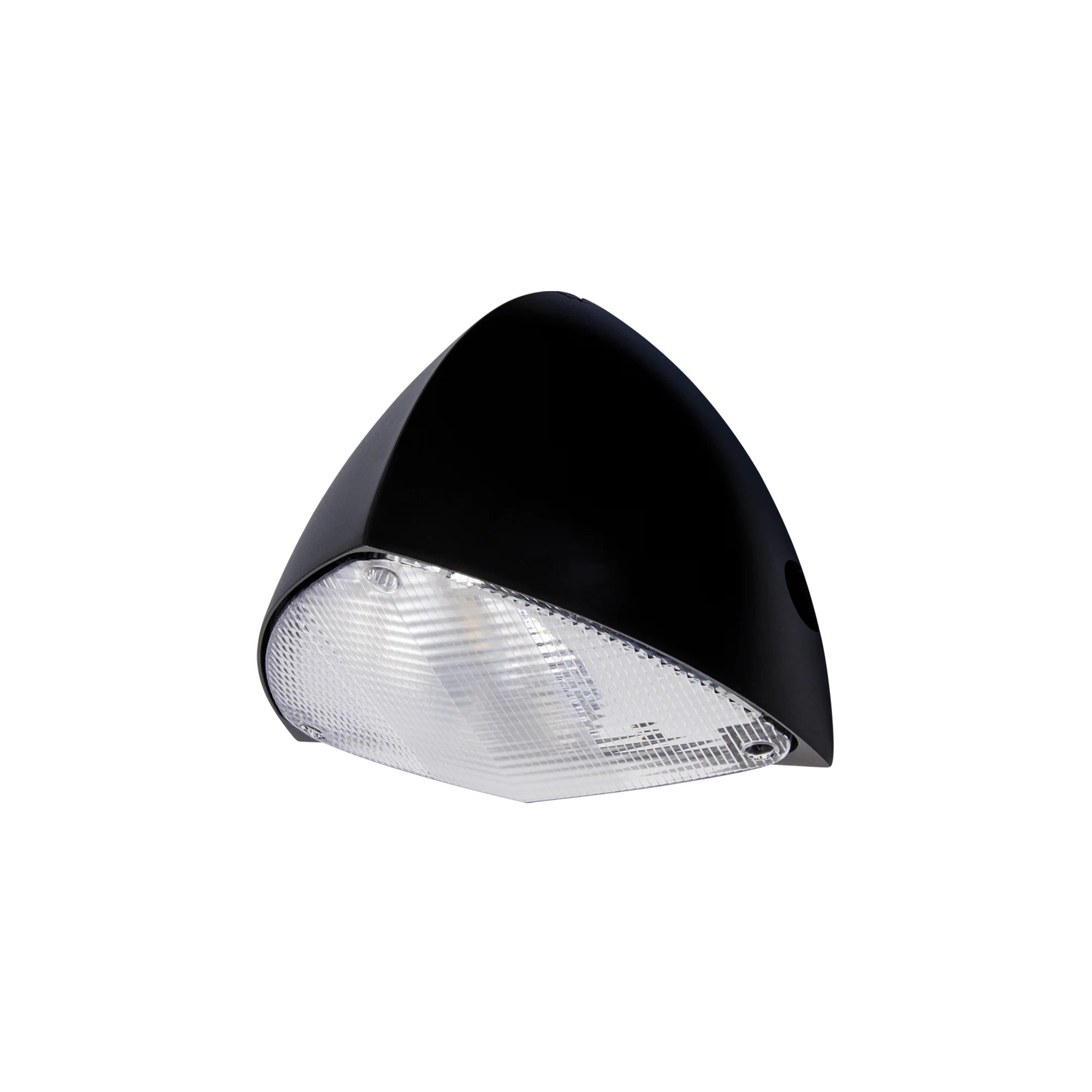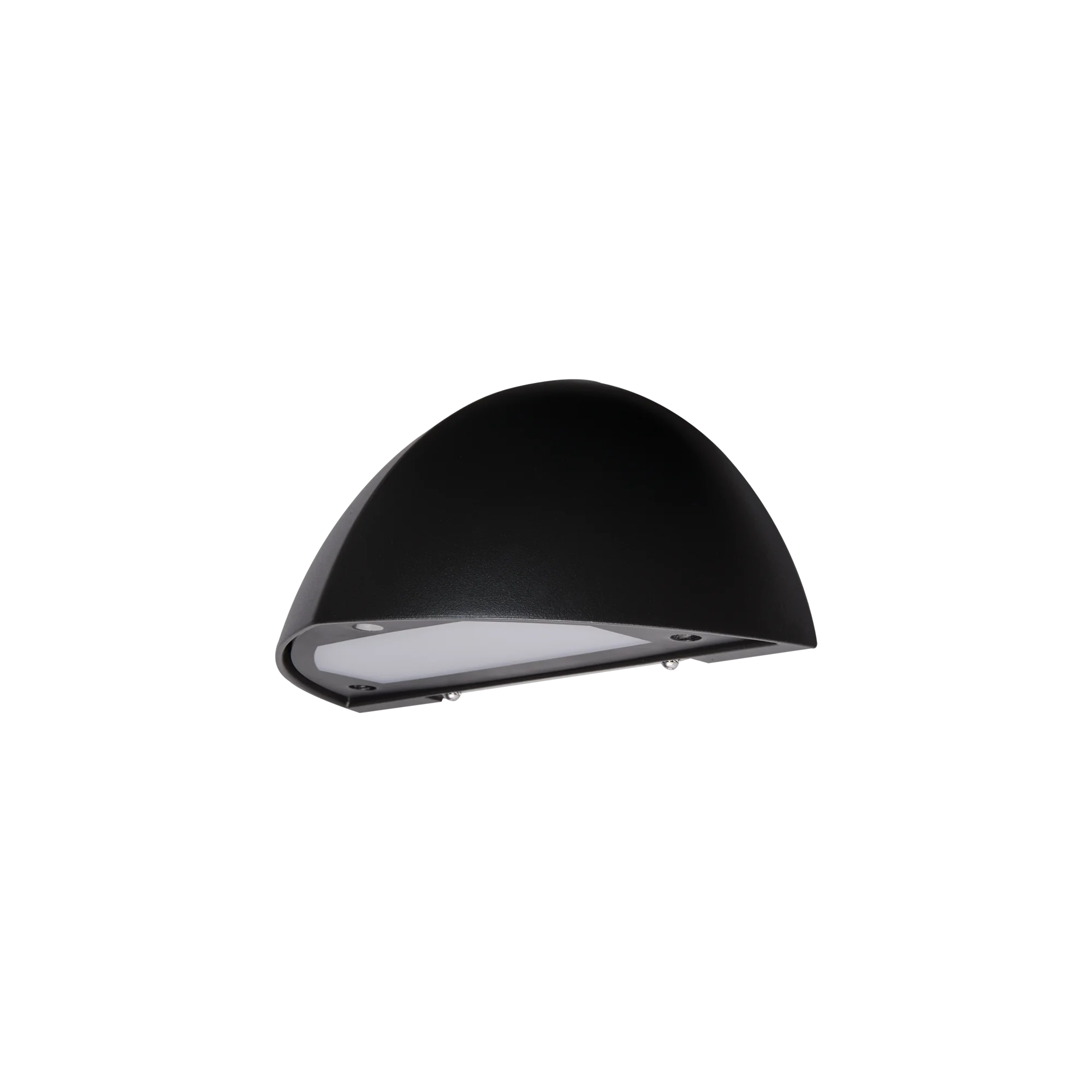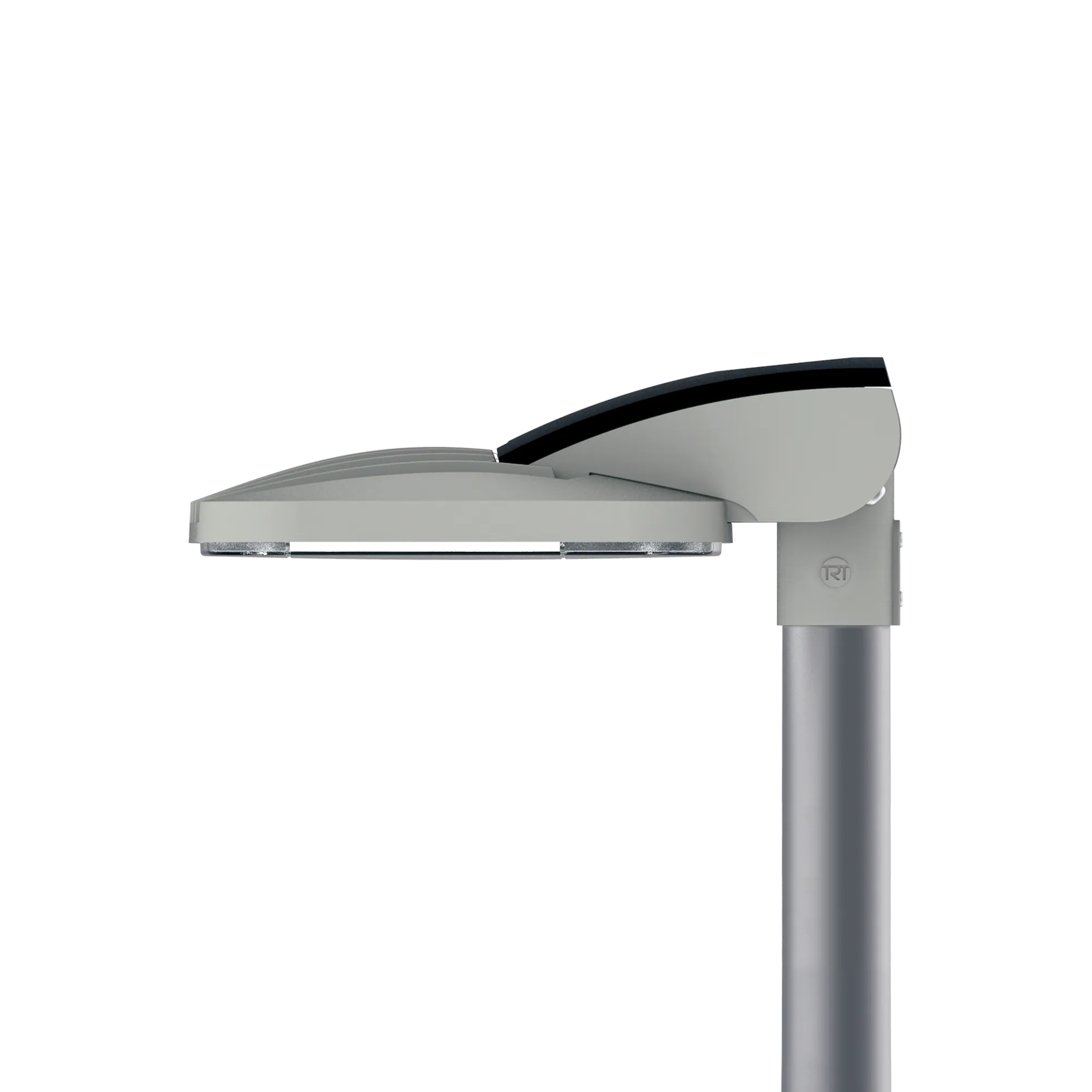University Station
Birmingham, United Kingdom
Rebuilding University Station in Birmingham has been a monumental undertaking.
An ageing canopy structure from the late 1970s on the southern leg of Birmingham's Cross City Rail Line has given way to a £56 million state-of-the-art station capable of handling up to 7.2 million passengers yearly. The expansion was essential due to massively increased demand; the station serves Birmingham University's main campus and the city's largest hospital, the Queen Elizabeth.
The new station features two spacious pavilion buildings, each containing comfortable waiting areas, offices, platform lifts, and improved facilities. The renovation took three years to complete, during which the station remained in almost uninterrupted use. Additional challenges included:
- Installing new bridges over the live railway line and the adjacent Birmingham-Worcester canal (which also remained open throughout).
- Building next to the protected remains of a Roman fort.
- Working around the global COVID pandemic and the 2022 Birmingham Commonwealth Games.
As a long-term supplier to West Midlands Trains, Thorlux was again delighted to supply high-performance, long-life SmartScan luminaires to this project.
Applications Covered:
The West Midlands Trains/Thorlux Relationship
Thorlux Lighting has worked closely with West Midlands Trains and Network Rail for nearly a decade and modernised the lighting systems at approximately 150 stations. WMT selected Thorlux due to its experience in the rail industry, UK manufacturing base, and long-standing carbon neutrality, among other factors.
WMT sought to provide better value to customers, futureproof its network and reduce its carbon footprint; it recognised that using efficient, low-carbon lighting systems to reduce emissions and costs was an excellent way to achieve these goals. Other objectives for the new lighting systems included reducing maintenance requirements, monitoring system conditions, and achieving consistent lighting levels across all sites.
Modernised lighting control was also a necessity for WMT. The rail industry had historically relied on out-of-date technology like time clocks to control lighting. This meant lights were either on or off with no controls for dimming or increasing light levels when required. This deficiency led to significant energy wastage.
In 2016, WMT became an early adopter of the then-new Thorlux SmartScan lighting management system, trialled in the rail environment as part of the 2017 lighting renovation at Redditch Station in Worcestershire. The success of this trial led to Thorlux supplying SmartScan-equipped lighting systems across the WMT network.
When drawing up plans for the new University Station, WMT specified the use of Thorlux luminaires and lighting controls. This requirement ensured lighting would be consistent with other stations across the network, with centralised status and reporting through the online SmartScan lighting management portal.
SmartScan and The New Station
The award-winning SmartScan lighting management system uses wireless mesh technology, enabling SmartScan and SmartScan Emergency luminaires to communicate within a defined area – indoors and outdoors. This information is uploaded to the secure SmartScan web portal via the SmartScan IoT Gateway. There, any user with an internet-connected device can access it. This facility provides station operators with in-depth information, including space occupancy over time and lighting performance down to the individual luminaire.
SmartScan-equipped luminaires provide other benefits for operators and passengers alike. Using movement detection to activate grouped luminaires creates clear pathways for passengers after dark. Quality lighting also improves CCTV footage, increasing site security. Dimmable lighting also reduces disruption for neighbouring residents.
The most notable advantage of SmartScan, however, is its energy saving. Properly commissioned, the system hugely reduces power consumption by providing the correct light levels in the right place at the right time. Even with lighting levels increasing by 500% at certain stations to achieve industry standards compliance, WMT has reduced carbon emissions by 65%. With the reduction in lighting energy costs due to increased efficiency, plus reduced maintenance costs (planned, reactive and callout) and other factors, WMT calculates it will save over £1m per year on its combined total energy and maintenance spend.
Customers arriving at the new University Station will find the outdoor areas and platforms illuminated by pole-mounted, IP66-rated Starbeam luminaires. These powerful, efficient floodlights emit less than 1% upward light, helping to reduce unnecessary light pollution. Corrosion-resistant A-Line luminaires have been deployed under platform canopies and in the passenger footbridge. Other outdoor spaces at the station are illuminated with wall-mounted Realta, Realta Micro and vandal-resistant Prismalette 360 luminaires.
Indoors, the high-ceilinged pavilion spaces are lit with powerful suspended Comboseal circular luminaires. Capable of producing over 22,000 lumens of white light, with colour rendition over 80 CRI, Comboseal is an ideal choice for large, fast-paced transit environments like University Station. Elsewhere, narrow-body Kanby LED Controller linear luminaires are installed outside the ticket offices, while backroom spaces feature Radiance Recessed fittings. All the luminaires connect via the SmartScan network.
The new University Station is now operating fully, serving students, hospital staff and the Birmingham public. Thorlux Lighting and West Midlands Trains were highly commended for their overall LED station lighting project at the 2024 Rail Business Awards.
To achieve our objectives, it was crucial to find the right lighting supplier to implement a solution never before seen on the UK's railway network. Thorlux was approached as a midlands-based company with [...] a longstanding reputation for innovation and a wide and unique range of products.
Richard Gannon
Project Manager, West Midlands Trains
